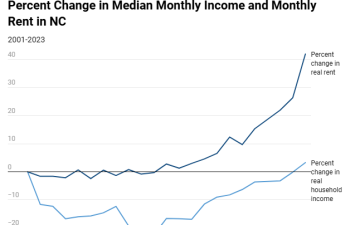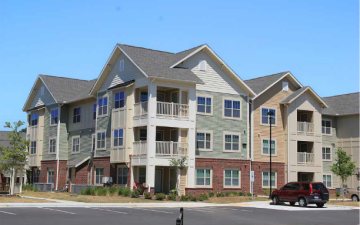Dr. Krista Perreira is a health economist who studies disparities in health, education, and economic well-being. In collaboration with the Urban Institute, she recently co-led a study funded by the Kate B. Reynolds Foundation to study barriers to access to the safety net for eligible immigrants and mixed-status families in North Carolina and identify promising strategies to increase access.
Dr. Perreira, a faculty fellow at the Carolina Population center and longtime collaborator with Carolina Demography, asked us to assist with demographic analysis and communicating findings to community leaders and funders.
We identified key data indicators that would paint a picture of North Carolina’s immigration populations overall, children of immigrants, and Asian populations. We then compiled data related to the characteristics of NC’s foreign-born population at the state and county-levels.
The Immigrant Community in North Carolina (PDF)
The Asian Population in North Carolina (PDF)
Children of Immigrants in North Carolina (PDF)
It’s important to note that this project was a true partnership – we collaborated with community leaders and researchers to prepare the data in a way that followed best practices in community-engaged research.
As part of the work, we created a slide deck that was presented to researchers and community leaders.
The work that we’ve done is being shared with community leaders and funders across North Carolina.
One participant who attended the presentation said “This is very interesting and helpful information [and we love] that your slide deck focuses on the big data points/facts It’s really exciting to be able to share the research in real time and we will continue to provide copies to other close partners and grantees.”
Kate B. Reynolds Foundation in collaboration with the Urban Institute
Using demographic data to tell the story of NC’s immigrants

This blog post expands on a previous blog post that examined housing cost burden across NC by focusing on the disparities between housing cost burden for homeowners and renters. In North Carolina, 66.8% of occupied housing units are owner-occupied, while…

In recent years, housing has become a hot-button issue both nationwide and in our state, as many people struggle to find secure, affordable housing options. David Rouse, Ben Hitchings, and Anita Brown-Graham of the UNC School of Government’s ncIMPACT Initiative…

In recognition of Veterans Day, Tuesday, November 11th, we are providing some statistics about North Carolina’s veteran population. The most current version was published on November 12th, 2025, with information from 2023 and 2024. Please note that the county veterans…
Your support is critical to our mission of measuring, understanding, and predicting population change and its impact. Donate to Carolina Demography today.